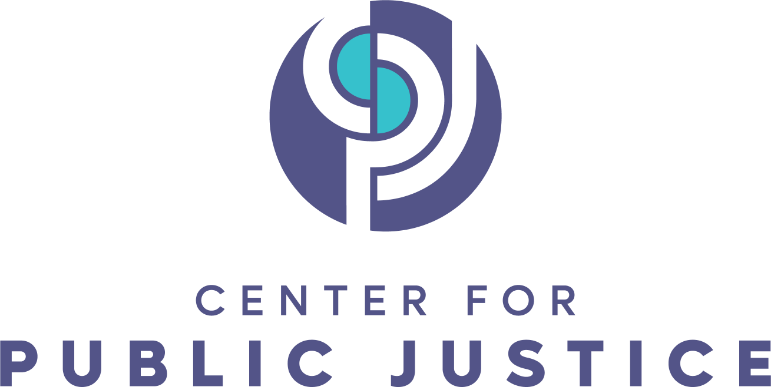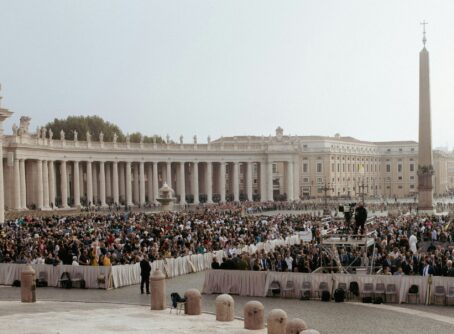As announced at the National Prayer Breakfast on February 6, President Trump has established a White House Faith Office, headed by Pastor Paula White, his long-time religious advisor who served as his White House Advisor on Faith and Opportunity Initiatives in his first administration. In some ways, the new White House Faith Office seems to be a focal point for the large group of clergy, many, but far from all of them, white evangelical pastors, who are vocal supporters of President Trump and promoters of a national religious revival. Yet Executive Order 14205, which created the Faith Office, outlines its purposes and tasks, making it a reinvigorated action center that pushes the federal government to respect institutional religious freedom, honor the daily compassionate work of religious and secular nonprofit organizations, and provide funding to them on terms that acknowledge their unique qualities and capabilities.
The first White House faith-based office—the White House Office of Faith-Based and Community Initiatives—was created by President George W. Bush in 2001. Presidents Obama and Biden called it the White House Office of Faith-Based and Neighborhood Partnerships. The first Trump administration, as noted, had a White House Advisor on Faith and Opportunity Initiatives. Each administration also maintained counterpart faith-based Centers in the major federal agencies that design social service programs and offer federal funding, sometimes via state or local agencies, to private organizations that design and provide the actual social services. Additionally, each administration has maintained Equal Treatment regulations that ensure that faith-based organizations can compete for federal funding without needing to suppress their religious identities and practices.
All of this has roots in the mid-1990s when Congress and President Clinton adopted Charitable Choice language as part of the major federal welfare reform law. The goal was to create new—different—social service partnerships and designs that would draw on the greater effectiveness and efficiency of locally oriented and often faith-centered community organizations, as an alternative to conventional, large, and typically secular social service programs. While there has been much innovation over time, the faith-based initiative has sometimes been more a way for federal officials to mobilize support from religious communities for administration priorities than a means to expand the good and essential work of neighbor-serving local organizations. Succeeding administrations, rather than devising an equitable way to simultaneously protect LGBTQ rights and traditional religious views and practices, have favored either the LGBTQ or the traditional side, making it difficult for even innovative and effective programs to maintain stable partnerships.
Trump’s Executive Order 14205, signed on February 7, specifies a reinvigorated federal faith-based initiative. Many critics of the administration are deeply worried that the MAGA movement’s many connections with white evangelicals are slanting the government toward theocracy, others worry that its focus on manic government-slashing activities through the Department of Government Efficiency are destroying government partnerships. The White House Faith Office Executive Order, by contrast, declares the administration’s intention to help not only “faith-based entities” and “houses of worship” but also “community organizations” in their varied “efforts to strengthen American families, promote work and self-sufficiency, and protect religious liberty” by, among other means, ensuring that these religious and secular private organizations can “compete on a level playing field for grants, contracts, programs, and other federal funding opportunities.”
The new Trump Faith Office is situated in the actual White House, in the West Wing, a telling indication of the importance of its mission to a President who is fully aware that, in matters of real estate, the right location is key. And in contrast to his first administration and to the Biden version, where the White House faith-based initiative was administratively anchored in the White House’s unit that promotes ties between the President and supportive leaders and groups, the new Faith Office is a attached to the Domestic Policy Council, the unit that develops, coordinates, and monitors the executive branch’s policies and actions that affect American society. Pastor White, named Senior Advisor to the Office, cultivates connections with an extensive set of religious leaders and religious communities, while the Office has an operational director, Jennifer Korn, who served in the first Trump administration. Her background is community-outreach and campaign responsibilities, but the new Office is tasked with responsibilities for policies and programs.
Key functions include ensuring that faith-based organizations can access federal funding, showcasing exemplary religious and secular programs of service, promoting volunteering and charitable giving by the employees of companies, working with federal agencies to improve how they communicate religious freedom protections in the law, promoting federal training that will help novice faith-based organizations improve their ability to compete for federal funding, and providing a way for faith-based organizations to identify and seek help to overcome illegitimate federal restrictions on their religious freedom.
The Executive Order strikes a subsection of an Obama faith-based Executive Order that required that when faith-based organizations receive federal funding to operate programs, if a beneficiary objected to the religious character of the organization, the organization must locate an alternative provider of the service and provide a referral to the beneficiary. Protecting beneficiary rights is essential, but the obligation as specified by the Obama administration did create an unfair and unequal burden on faith-based providers. The first Trump administration abolished the requirement, and then the Biden administration revived it. There is a way simultaneously to protect the rights of both beneficiaries and faith-based organizations, and the second Trump administration has given itself the task to try again.
Every federal government has multiple contact points with religious people and faith-based organizations, because America remains a nation of high religious commitment, multiple religious communities, and extensive community-serving actions by faith-based organizations. Many of those contacts involve federal regulation of religious entities; many other contacts concern the requirements attached to federal funds and the specific design of federal social service programs. It was a historic and vital innovation when President George W. Bush created the federal faith-based initiative. It is a credit to subsequent administrations of both parties that they have maintained this commitment to a constructive federal engagement with faith-based community-serving organizations. The stated goals and specific details of President Trump’s Executive Order establishing the new White House Faith Office hold the promise of a much-needed reinvigoration of the federal faith-based initiative.
Stanley Carlson-Thies is the Founder and Senior Director of the Institutional Religious Freedom Alliance (IRFA), a program of the Center for Public Justice.





